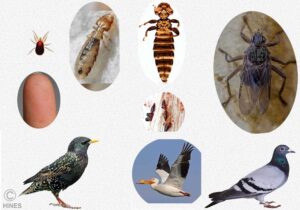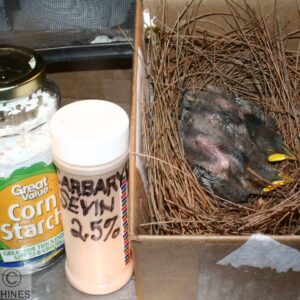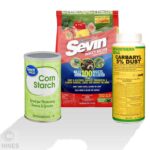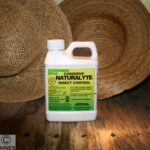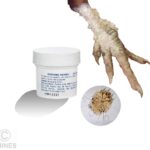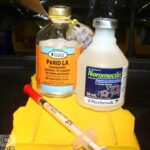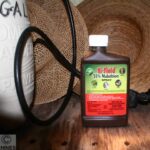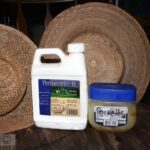A Wildlife Rehabilitator’s Guide To Mites And Lice On Birds And Mammals
And How To Eliminate Them
Ron Hines DVM PhD
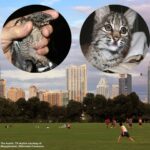 All Of Dr. Hines’ Other Wildlife Rehab Articles
All Of Dr. Hines’ Other Wildlife Rehab Articles
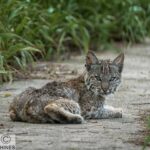 A Wildlife Rehabilitator’s Guide To Parasite Control
A Wildlife Rehabilitator’s Guide To Parasite Control
The products and techniques mentioned on this webpage are all “off-label” product techniques and uses. That means that they are not government or manufacturer-approved uses or techniques. In the United States, no medications are approved to treat wildlife. The profits they would bring to the manufacturers do not justify the research and expenses that would be involved to gain government approval. I make my decisions based on my experience and the experience of others in caring for wildlife. But you must make your own independent, knowledge-based, decisions when you consider using any product off-label in or on animals for which they are not government-approved.
Sevin® & Generic Brands of 5% Carbaryl
Carbaryl is a traditional agricultural insecticide that has been around since 1958. A major ecological advantage of carbaryl is that it breaks down rapidly in the environment when exposed to moisture or sunlight. For many years, carbaryl was the standard shampoo treatment for human head lice. However over the years some human lice have become resistant to it. Carbaryl has a very low toxicity for birds and mammals. It still shows up on the NHS list of available head louse shampoos in the UK, but I believe that is an error. Scientists measure toxicity to a compound in a measurement called LD50. Applied to the skin of rats, even 5000 mg/kg had an LD50 of zero. Long-term exposure risk also appears to be minimal. ( read here ). But despite that, the FDA decided that 4% pyrethrum and piperonyl Butoxide (as found in Nix® or Rid® louse shampoos) are safer options than carbaryl and no longer allows carbaryl in products intended for human use.
For many years, I have mixed 5% garden carbaryl powder (eg Sevin™ Dust) with an equal amount of corn starch to obtain a 2.5% carbaryl mixture. A single powering with that mixture eliminates chewing lice on pelicans and sea birds; and fleas on opossums and raccoons. That mixture is equally effective in eliminating feather mites on wild songbirds ( passerine birds), owls and raptors. I apply it with a salt shaker. Of course after the treatment everyone need to be moved to non-contaminated cages. The half-life of carbaryl on birds is about 16 days.
I hesitates to suggest that you do what I do because all powders are easily inhaled. You might want to consider the next product, spinosad, instead
Naturalyte® Conserve Spinosad 0.5%
Spinosad is sold under various manufacturer names. It is best known to veterinarians and dog and cat owners because it is the active ingredient in Elanco’s Comfortis® chewable tablets. They are sold for the control of fleas. Elanco also markets Triflexis® which combines spinosad with milbemycin so it also kill heartworms as well as fleas. Naturalyte® Conserve Spinosad 0.5% is not approved for use on animals. In America it is sold as one of the very few insecticides that the USDA-approves for used by organic farmers. That is because it is a natural product produced by certain bacteria. Free-living and parasitic insects have a nervous system quite different from mammals, birds or reptiles. When insects are exposed to spinosad, they become paralyzed due to their muscles contracting uncontrollably. But they are not necessarily dead until 1-2 days have passed.
Spinosad is quite effective in killing poultry mites. ( read here) In tropical Texas where I live, I mist spinosad on my dog and around the outdoor porch where he relaxes as an extra precaution against our plentiful kissing bugs and fleas. I also find that spinosad is effective in ridding baby starling of the little bloodsucking mites they generally arrive with. For all of them, I add 0.5 ml of Naturalyte to 30 ml of water and then add a drop of Dawn™ dish soap. I give them a thorough misting using a 4 oz spray bottle. Thirty mils is barely enough to activate a 4 oz mister bottle, but tilted, it is enough to mist a great number of birds, baby opossums, bird boxes and the like. Misting is light, so I rarely have to blow dry the animals. I have never seen side effects.
Rotenone is an extract of derris plants. Derris plants produces this insecticide to protect themselves from insects. Rotenone is still sold as a 1% dust for organic farming. It was once commonly called “Rose dust” and was commonly used to control aphids on roses. It is not commonly used anymore because a study in rats found that at high concentrations and prolonged exposure to rotenone appeared to cause Parkinson’s-like symptoms in rats. Many years ago, a friend of mine, Ted Lafeber, who owned a veterinary hospital in Niles, Illinois suggested I mix rose dust with cold cream as a treatment for localized knemidocoptic mite infections in aviary birds and poultry. It was quite effective. But it was never clear if it was the oily cream or the rotenone that killed the mites. You see, mites and insects breath through their spiracles and anything that plugs those spiracles kills mites. That’s why sparrows take dust bathes. Rotenone is still available as an ingredient in the Goodwinol Ointment shown in the image above to treat mange in dogs and many avian veterinarians including myself have used it successfully on cage birds. For all mites on wild and domestic mammals there are considerably better mange medication options today. ( read here ) For birds, topically applied ivermectin at 0.2 mg/kg (200 mcg/kg) is a better option. For wild mammals I know that some have used oral Capstar® and others have probably tried feline Credelio®. But I have no experience using ether of them in wildlife.
Ivermectin is commonly sold as a 1% solution. That is the same as 10 milligrams per millilitre (ml) or cubic centimeter (cc). The 1% solution also equals 10000 micrograms per millilitre. The standard veterinary dose of ivermectin – both by injection and orally – is 200 micrograms/kilogram (0.18mg/pound). There is much less ivermectin in dog heartworm pills like Heartgard® (6 micrograms/kg [2.72 mcg/lb] ) because it is meant to be given as a preventative – not a cure – every month. Double the standard 200 mcg/kg amount can be toxic to birds. Doses above about 2500 mcg/kg (2.5 mg/kg) are toxic to domestic cats. I would stay below that in all species of felines. Ivermectin seems to always be safer when given orally than when given by injection. It can be diluted with propylene glycol but some believe that only some brands (Eqvalan®) can be diluted with water. Ivermectin is effective in killing many species of mite, gapeworms and some intestinal nematodes. Ivermectin is highly toxic to fish and crustaceans. My primary use of ivermectin is to rid pelicans of “bag lice”. I inject the proper dose for their weight into a fish and toss one to each bird. But I have also given it orally in the same per pound/Kg dose and manner to otters, raccoons and sea lions and have never encountered toxicity problems. Rather than be challenged by the math involved, one Australian scientist found that a single drop (0.05 ml) of 1% ivermectin, placed on budgies weighing less than 30 grams cured them of knemidocoptic mites while two drops placed on affected areas cured other bird species weighing up to 100 grams. I have never used ivermectin to treat that particular localized mite problem.
Malathion is the most widely use pesticide in the United States. It is also one of the least toxic insecticides to humans and animals. It is widely available on the plant isles of your big box stores. But I do not know of anyone who would consider applying it to animals. For one, it smells awful. The second reason it that its effects on parasites are short lived. Texas A&M University extension service still recommends malathion as one option to control mites and lice in chicken and turkey houses. Their suggestion is that 5 tablespoons-full of 57% Malathion be added to each gallon of spray water. They mention that the birds can be left in the henhouses during the procedure. Kansas State University extension service still recommends malathion as a “spray option for cattle, sheep, goats, horses, pigs, poultry, dogs and cats to combat ticks, flies, fleas, lice and mites” and for for horn fly control. As I mentioned, malathion does not persist in the environment for long. Half of it has already decomposed after a one-day contact with the soil, 1.5 days on building surfaces and 5.5 days on produce. I have never applied malathion to animals of any kind and suggest that you don’t either. I keep some malathion around to kill pesky tomato hornworms caterpillars on the tomato and eggplants growing in my garden.
Malathion-laced sugar is very effective in reducing flies on your premises. When I ran animal colones at the NIH, I purchased the Golden Malrin™ brand in quantity to control stable and house flies. Any time a fly was found loose in one of the medical labs in our building, they blamed it on me. First I purchased several Sing Sing Bug Chairs™. They put on a great show, sparking and lighting up whenever a fly got zapped. My animal caretakers would pull up chairs and place bets on how long the fly might buzz around before it shorted out the wires. But it never compared to Golden Malrin in effectiveness. Like all insecticides, it is toxic to bees, some fish and other aquatic life. Where malathion has been used as a street fog to control West Nile-carrying mosquitoes, one study indicated that the songbird population in the area decreased. But they did not determine if that was due to the effect of malathion on the birds or if it decreased the general insect population that the birds in the area fed on. I shower after I work with any insecticide and you should be cautious too. (read here)
Permectrin II™ Permethrin
Permectrin II® is a Boehringer Ingelheim permethrin product designed to rid livestock of flies, ticks and other pests. Permethrin is an artificial, enhanced and longer-lasting version of pyrethrin . Pyrethrin is an extract of the Dalmatian chrysanthemum flower. Permethrin is not an organophosphate insecticide like malathion or carbaryl. But being a synthetically enhanced product, permethrin is not approved in the United States for use by “organic” farmers or ranchers. Permethrin is also the active ingredient in some human head louse and scabies medications. Permethrin is also an ingredient in Bayer’s K9 Advantix® II, a topical product for to control ticks and fleas on dogs. Permethrin is highly toxic to cats. Permethrin has been used to control lye disease-carrying ticks on whitetail deer using four posts with rotating brushes to apply it to the deer’s side as they enter a deer feeder area (similar to an old fashioned cattle back rub). No deer toxicity problems were reported over four years. But it did little to reduce the number of ticks on the animals. Permethrin appears to increase the likelihood of abnormal development in immature birds and embryonating eggs.
I mix Permectrin II® with Vaseline (petroleum jelly) and brush the mixture onto the 4 x 4 treated lumber posts that support some of my outdoor flights. That is because very aggressive fire ants and what appear to be extra-large carpenter ants quickly learn to scale the posts to feed. Those pests will kill birds and mammals when allowed to and this concoction is the only one I have found that keeps them at bay for about a year. Once enough dead ants and debris have accumulated on the jelly for the ants to cross over the mixture needs to be re-applied. I also spray Permectrin II into all cracks and crevices on our wooded lot that I suspect might harbor kissing bugs. Although permethrin has a very low toxicity to birds and most mammals, it is highly toxic to felines, fish and honey bees. It is effective in killing mites and lice on birds but allowing the spray or mist to get into or near the eyes should be avoided. I have mixed 0.2 ml Permectrin II® in 30 ml of water with an added drop of Dawn dish-washing liquid. A light mist has not caused side effects in the sparrows and starlings I have applied it to. As with Conserve™, 30 millilitres is barely enough to activate a 4 oz spray bottle. I blow dry immature birds and mammals when required and I am careful not to apply it where felines (cats) reside. Permectrin II is approved for use on pigs, sheep, poultry, dogs cattle and horses to control lice, mites and ticks. Follow all precautions on the label.

